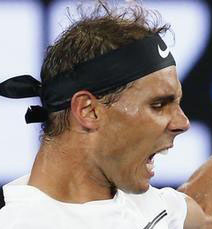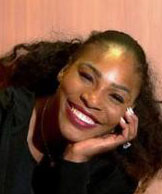LONDON, (Reuters) – Serena Williams needed just one January fortnight to underline her greatness before Roger Federer and Rafael Nadal then spent the rest of 2017 reminding us of why tennis really is still basking in its age of sporting wonders.
When Williams beat big sister Venus in the Australian Open to lift a 23rd grand slam singles crown, a record in the Open era, she seemed so dominant that a calendar year grand slam even felt feasible.
Instead, it was to be the last match Serena played all season as she ended up celebrating an even happier event.
For after it was revealed that, astonishingly, she had been eight weeks pregnant when winning in Melbourne without dropping a set, Serena gave birth to baby daughter, Alexis Olympia in September.

She reckoned those ‘AO’ initials were a nod to how they spent together on court at the ‘Australian Open’ and Serena will be back there in January at 36, seeking to equal Margaret Court’s all-time record of 24 singles slams.
Yet even ‘supermum’ Serena would do well to top the amazing Federer-Nadal comeback roadshow of 2017 as they seemed to hop from some time machine to share the season’s four slams.
That would have been considered preposterous at the start of 2017 with Federer, at 35, given no chance after a six-month injury absence, and 30-year-old Nadal apparently a shadow of his old dominating self after so much wear and tear on his battered knees.
Instead, the pair served up an epic final in Melbourne, won in five mesmerising sets by Federer, that was to reignite and reshape sport’s most shining rivalry.
With his new-found swashbuckling backhand attack, Federer beat his nemesis in all four 2017 meetings but, also recognising the importance of rest, decided daringly to bypass the entire draining claycourt season.
He was right to predict Nadal would be unstoppable as usual at his Roland Garros kingdom as the Spaniard achieved ‘La Decima’, that unreal 10th French Open crown, without dropping a set and thrashing Stan Wawrinka in the final.
A refreshed Federer was then equally majestic at Wimbledon, winning a record eighth crown in the same blemish-free fashion, outplaying injury-hit Marin Cilic for his 19th slam.

Nadal did, though, win their duel for the world No.1 spot in August as Federer’s form was affected by back trouble and the Spaniard roared to a 16th slam, beating Kevin Anderson in the U.S. Open final.
Of course, the duo’s monopoly was aided by injury woes for the outgoing no.1 Andy Murray and Novak Djokovic, whose lame exits at Wimbledon persuaded them to take a leaf out of Federer’s book and seek rest and recuperation.
They will be back raring to go in Melbourne, as will Grigor Dimitrov, leader of the chasing pack who was crowned ATP Tour champion in November, but Federer, who lost just five of 57 matches and lifted seven titles, offered the eerie impression of actually playing better than ever.
Williams, meanwhile, will return, knowing no-one seemingly had the game nor ambition to take command of women’s tennis in her absence.
Four others also held the No.1 ranking in 2017 — Angelique Kerber, Karolina Pliskova, Garbine Muguruza, winner at Wimbledon over 37-year-old Venus Williams, and Simona Halep, who ended the season on top.
Halep, though, again fell short in the biggest events, topped by her loss to free-hitting 20-year-old Latvian Jelena Ostapenko in the French Open final, perhaps the most startling triumph of the year from a youngster who had previously not even won any tour event.
As for comeback of the year, even Federer bowed to Petra Kvitova, who returned after a career-threatening knife attack to win, astonishingly, in just her second tournament back on tour.
Then there was Sloane Stephens, who after 11 months out with a foot injury that needed surgery and having been ranked 957th only a month before the tournament, won her home U.S. Open final against great friend Madison Keys.
“If you told someone this story, they’d be, like, ‘That’s insane.’,” Stephens mused afterwards.
She could have been reflecting on the whole of a faintly surreal but wonderful tennis year.

